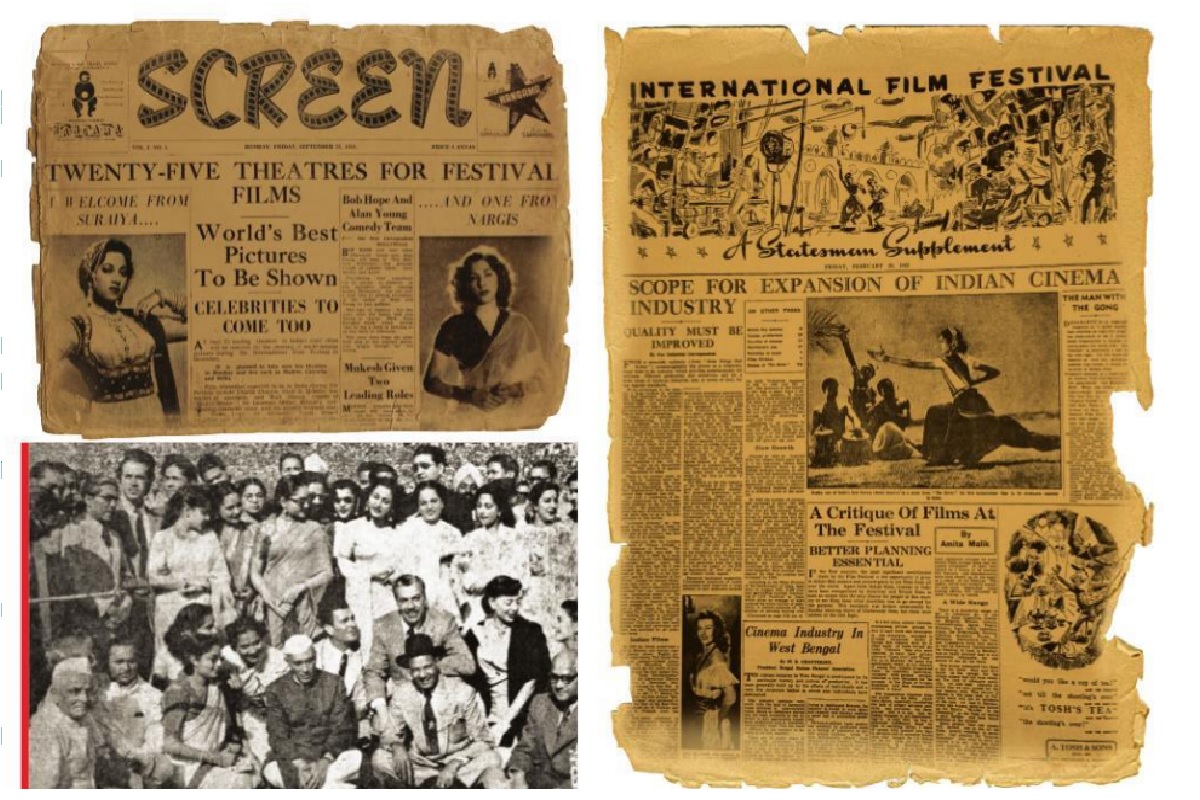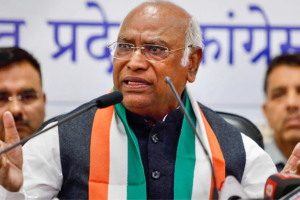In 1947, India’s attainment of freedom was marred by unprecedented fratricidal riots, the displacement of more than 7 million people, large-scale destruction of properties, and many more horrific nightmares. In that precarious situation, the country saw the assassination of Gandhi, an attack by Pakistan, a perplexing political gambit in the decolonisation of small French and Portuguese enclaves, and the inclusion of princely states in the Indian federal system.
Though the Jawaharlal Nehru government took the policy of the socialist model of welfare state, where the basic needs of people are to be given maximum priority by the government, it did not ignore the channels that help to develop human resources. Nehru’s initiative of hosting the first Asian Games in Delhi in 1951 was soon followed by his initiative to host an international film festival travelling all four metro cities of India to give the urban cinegoers a real taste of international cinema from all leading cinema-making nations.
Advertisement
The task was given to Mohan Vavnani, a major producer of documentaries in the Film Division, by Nehru while they met in Kashmir in 1951. Nehru took it personally to host the event and asked the Ministry of Information and Broadcasting to render all support. A budget of Rs 1.5 lakh was sanctioned soon.
Advertisement
It was planned that a mobile film festival would be organised in December 1951.
It would show a plethora of feature and documentary films to the cine-goers of Bombay, Delhi, Calcutta, and Madras for two weeks.
The festival would kick off in Bombay and conclude in Calcutta, touching Delhi and Madras in between. The now-defunct film newspaper Screen, published by The Indian Express, first unfolded the news in a big way in its issue dated 21 September 1951. Its headline read, “Twenty Five Theatres for Festival Films – World’s Best Pictures to Be Shown”.
Screen avowed in its report that top global film celebrities like Charlie Chaplin, Walt Disney, Ingrid Bergman, Robert Rossellini, Vivian Leigh, Sir Laurence Olivia, etc. would grace the occasion. However, most of the luminaries mentioned in the report did not actually turn up.
Frank Capra came and visited Calcutta during the festival. Both Italy and Russia sent a big group of celebrities. Russian director Pudovkin spent a long time with Indian cinema titans and visited many cities.
Finally, the festival was inaugurated in Bombay in 1952. Azad Maidan of Bombay was the main venue, along with several key theatres in the city.
Jawaharlal Nehru could not be present at the opening ceremony in Bombay, but he was enthusiastically there when the festival arrived in Delhi in midFebruary 1954.
At its last leg, the festival finally arrived in Calcutta on 28 February 1952, after travelling to Bombay, Delhi and Madras.
It was the gala closing ceremony to India’s first international festival, and Calcutta, the city that by that time housed one of the best active film societies in India, founded in 1947 by Chinananda Dasgupta, Satyajit Ray, Harisadhan Dasgupta and RP Gupta, played a perfect host.
Calcutta, though badly ravaged by that time thanks to riots, famine, partition, and the flight of capital, was a city of extraordinary intellectuality for American and British films. It had a ready audience hungry to feed more for the best of world cinema. The festival was inaugurated on 28th February 1952 by Dr Harindranath Mukherjee, Governor of Bengal.
The Deputy High Commissioner of Pakistan, Dr Abdul Hamid Chowdhury, and the King and Queen of Nepal’s royal family were invited as special guests. A pool of foreign diplomats, delegations, and Bengali film actors were present at the function. The festival arrived in Calcutta with a pack of more than 100 movies.
The central venue selected was Eden Gardens, where a makeshift exhibition ground was erected with a touch of rural Bengal. The arena was decorated with Bengal’s alpana and other traditional motifs like double-sloping thatched roof mud huts, wood crafts, banana trees, hand-painted potteries, terracotta panels, and floral designs made of soft sola.
An exhibition zone and a central stage were done, and every day several cultural programmes were organised. Like Bombay’s Azad Maidan, tents were pitched for cinema shows, while many modern theatres like Minerva, Elite, Lighthouse, Purno, Basusree, Prachi, Chitra, Bina, and Sree were also made venues for the festival. Each theatre was allocated 5 to 7 shows per day to run 50 feature films and 90 documentary films from 23 countries, like Russia, Hungary, Japan, Argentina, Egypt, America, Indonesia, Canada, Norway, Great Britain, Italy, France, Australia, Rumania, and even East Germany.
From India, four films, one each in Hindi, Marathi, Bengali, and Telugu, were on the list. Raj Kapoor’s Awara in Hindi, V. Shanta Ram’s Amar Bhoopali in Marathi, and Agradoot’s Babla in Bengali were the top picks on the list.
The ticket price for the public was fixed between Re 1 and Rs 10. In a nutshell, the festival turned out to be a treasure box for cinegoers of that time who, before this, only had the scope to watch American and British films commercially released in Calcutta.
Their exposure to cinema in other countries other than America and Britain literally started with this festival. Some of the epoch-making cinema of the history of the world, like Open City by Roberto Rossellini, Bicycle Thieves and Miracle of Milan by Vittorio De Sica (Italy), The River, which was shot in Bengal, The Magic Box (Britain), The Fall of Berlin (Russia), The Man in the White Suit (Britain), The White Haired Girl (China), No Highway in the Sky (USA), Yukiwariso ( Japan), The Greatest Show on the Earth and An American in Paris (USA), and Mrs Deri (Hungary) were shown in the festival.
No wonder Uttam Kumar, then a struggling Bengali actor, watched many of these movies to learn the fundamentals of acting, and he was so influenced by Italian actor Marcelo that he later acknowledged that his style of acting was indeed influenced by him. Uttam Kumar participated in the opening ceremony of the festival held on 28 February 1952 at Eden Gardens as an invitee.
An old archival photo shows him in the group—not very prominently, though. For the members of the Calcutta Film Society, especially Satyajit Ray, Bangshi Chandra Gupta, and Chidananda Dasgupta, it was the opening of a floodgate of world cinema, from which all of them picked various parts of learning and later blended that wisdom into their own work.
After this festival, Raj Kapoor got an invitation to participate in several film festivals in Russia, and he and Nargis became household names there. The saddest part of the festival was that one of the best movies made in Italy, titled Path of Hope, was damaged while being sent from Italy to India by air. The film could not be shown.
While city cinema halls were showing regular movie shows in packed houses from 29 February to 14 March the central stage of the festival at Eden Gardens hosted a plethora of cultural events every evening. From Shambhu Mitra’s play to Rabindranath Tagore’s musical opera Shyama, and from pantomime by Satish Ghosh to classical music evening by Jyan Prakash Ghosh, the festival arena went agog every evening. A magazine stall was put up to sell film-related magazines, periodicals, and books published across the world.
As a sentinel of the time, The Statesman did an excellent job on this event. While other English and Bengali dailies in Calcutta covered the event with considerable importance, The Statesman on 29 February 1952 morning came up with a special 8-page broadsheet International Film Festival supplement, which was distributed free with the main paper. It was a rich collection of essays and photographs, covering both Indian and foreign films. Its industrial correspondent wrote a detailed article on the scope for expansion of the Indian cinema industry, while MD Chatterjee, then president of the Bengal Motion Pictures Association, contributed an article on the cinema industry in West Bengal. Mr Chatterjee pointed out that a lack of capital invested in Bengali cinema is creating a situation of under-utilisation of cinema infrastructure in the state.
The supplement contains an article by Amita Malik, the best-known media critic in India for nearly 50 years. Amita, while explaining her bitter experience of the festival’s Bombay episode, expected a better planned festival in Calcutta where a spectator does not need to travel miles between two shows in one day. No wonder her article was titled “Better Planning Essential.”
The supplement also contained articles on the British Film Industry, Taxation on Films, Recording of Sound,Cinema Architecture, Film Division,Distributor’s Role, etc. It is still a collector’s issue. Bengali newspaper Jugantar and English newspaper Amrita Bazar Patrika also came up with special pages on Calcutta’s first film festival, but the supplement of The Statesman was class apart.
The writer is a freelance contributor
Advertisement











